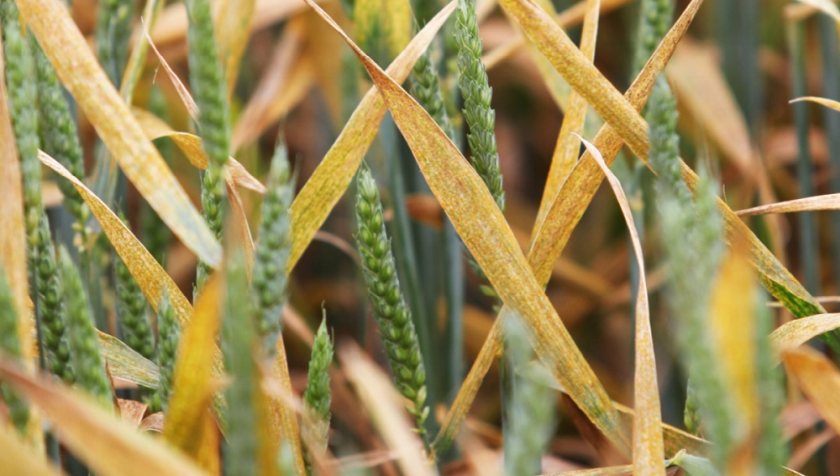
Unusually high levels of yellow rust in winter wheat have forced AHDB to slash disease resistance ratings for some key varieties, months ahead of schedule.
The levy organisation's updated Recommended Lists (RL) yellow rust ratings aim to help farmers adjust management strategies ahead of harvest 2026.
Following the unexpected appearance of yellow rust in RL trials during early spring, AHDB advised growers not to rely on the RL 2025/26 yellow rust ratings when planning fungicide programmes.
In May, the NIAB-led UK Cereal Pathogen Virulence Survey (UKCPVS) confirmed that a major yellow rust resistance gene – Yr15 – had been overcome by a new strain of the disease.
The gene is present in many commercial varieties, with some losing up to five rating points in the RL 2026/27 update.
RL adult plant disease resistance ratings use a numerical scale from 1 (least resistant) to 9 (most resistant). Normally, rust ratings are based on three years of trial data, with recent results given greater weight since RL 2021/22 to increase sensitivity to changes in rust populations.
However, due to the sudden emergence of the Yr15-virulent strain, the RL 2026/27 yellow rust ratings rely solely on harvest 2025 data, following a rigorous validation process.
AHDB crop protection scientist Siobhan Hillman, who leads the rating calculations, said: “This is only the second time we have issued the yellow rust ratings based on a single year – the previous occasion was in 2016 following another significant shift in virulence.
“Genotyping analysis by NIAB and the John Innes Centre suggests that the Yr15-breaking strain probably evolved by mutation in late 2024.
"In the UK, it was first seen in North East England and spread rapidly in spring, impacting many RL trials and commercial crops. Yr15-virulent isolates have also been identified in several other European countries this year.”
NIAB-funded research indicates that the Yr15 gene may be present in around a third of RL varieties. Twelve varieties have seen ratings drop by two to five points in the RL 2026/27 data release.
Some varieties with Yr15 carry other effective yellow rust resistance genes and recorded relatively little change, while varieties without Yr15 are unaffected.
About half of winter wheat varieties on RL 2025/26 maintained the same rating or fell by just one point, and a few improved due to declines in other yellow rust strains.
Several candidate varieties remain susceptible to the new strain, potentially affecting RL inclusion later this year, though some performed well, including varieties rated 8 for yellow rust resistance.
Since RL 2023/24, young plant resistance (r) or susceptibility (s) has been presented alongside adult plant ratings, based on UKCPVS screens and RL trial data before stem extension.
In RL 2025/26, 13 of 38 winter wheat varieties were classified as resistant at the young plant stage. As this is likely linked to Yr15, most varieties are expected to be classified as susceptible in RL 2026/27.
The 2025 ratings reflect results from 33 trials (28 naturally infected, 5 inoculated). While the new strain was not present in all trials, especially in the far south of England, its virulence and the widespread use of Yr15 mean it is likely to spread further in 2026.
Although it may take a couple of years for the yellow rust population to stabilise, next year’s ratings could still be affected, albeit less dramatically.
Growers are advised to monitor all varieties closely, even in traditionally low-risk areas, and report unexpected rust levels to UKCPVS.
